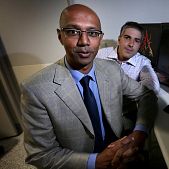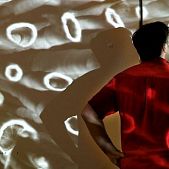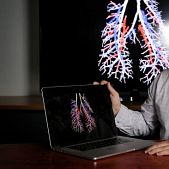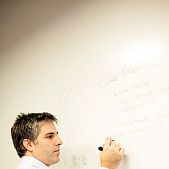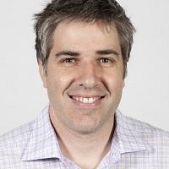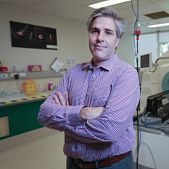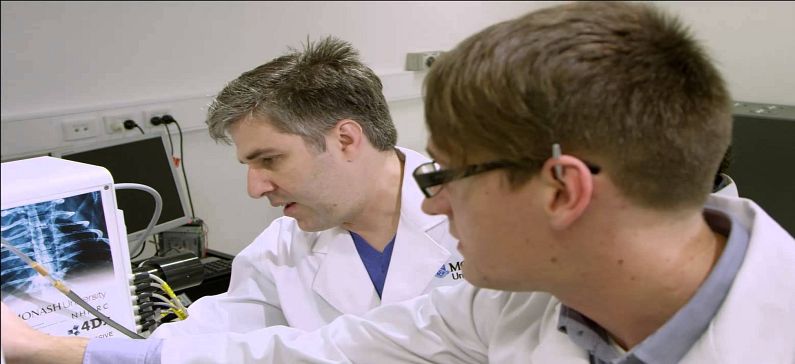
Develops new technology for the treatment of all the lung diseases
Andreas Fouras is an award winning researcher, innovator and entrepreneur. He is an Adjunct Professor of Mechanical and Aerospace Engineering. He leads the Laboratory for Dynamic Imaging at Monash University. His research focuses on developing new imaging technology and applying this technology to the benefit of medical science and clinical practice.
With over 25 patent applications and 100 research papers he is an established innovator in the Medical Devices sector. He is a Professor at Monash University, and a visiting Professor at Cedars-Sinai Medical Center. He is working to revolutionize respiratory healthcare through his efforts as Founder and Executive Chairman at 4Dx.
Born and raised in Brisbane, he moved to Melbourne after completing a Bachelor of Mechanical Engineering at the University of Queensland. He began his research career studying a Masters of Engineering Science, using particle image velocimetry (PIV) techniques to measure unsteady, separated flows. After such time, hejoined the Australian Army Reserves, graduating from RMC Duntroon to serve a diverse range of command positions from 1998–2007.
Returning to academia, Andreas graduated from his postdoctoral studies in 2008, receiving the Bill Melbourne Medal for the best PhD thesis in the Department of Mechanical and Aerospace Engineering.
Since graduation, his career has gone from strength to strength; ranked Australia’s top NHMRC Career Development applicant in his category in 2011, winning prestigious grants including the largest NHMRC Development Grant ever awarded to translate his lung imaging technologies, and the Vice Chancellor’s Award for Excellence in Research by an Early Career Researcher. His leadership has also been recognized with an ADC Australian Leadership Award. The announcement of his promotion to Professor in November 2014, six years after graduation, is a testament to the passion and quality of his work.
He ardently articulates his work to the public through significant media engagement, and has done so in print, radio, TV, and through various public lectures. He strives to raise the profile of young Australian researchers through influencing science policy, specifically around innovation.
He is appointed as an Australian Academy of Science EMCR Forum Committee Member, and has recently participated in AAS’s Theo Murphy High Flyers Think Tank, ADC Forum’s National Infrastructure and Cities Summit, as well as Science Meets Parliament.
His keen interest in mechanobiology – the study of physical forces in biomedical processes – has led to developments of new imaging technology that unlock this knowledge. He has developed extensive expertise in the in vivo measurement of motion and flow utilising a range of modalities spanning the visible to X-ray spectra. In 2012 he founded a startup company 4Dx Pty Ltd to ensure maximum impact of that technology.
Andreas’ efforts focus in the field of mechanobiology – the way that physical forces and changes in cell or tissue mechanics contribute to development, physiology, and disease. In particular, his efforts in research and supervision have led to the development and subsequent application of new imaging technology for the measurement of physically dynamic events within biomedical systems.
Over recent years, he has made significant advances in a number of fields:
- X-ray computed tomographic (CT) velocimetry techniques. Recently, he has successfully translated this patented technology from the synchrotron to the laboratory. This development is embodied in the globally unique pre-clinical real-time functional CT system in operation in his laboratory. This technology is well placed to have a dramatic impact in research into the lung, diseases of the lung and their treatment. Progress in being made into the further development of this technology to a human platform where this technology is set to make a huge impact into the clinical treatment of all diseases of the lung – currently responsible for approximately 1/6th of all healthcare. He is currently leading efforts to develop a clinical trial for evaluation of the utility of this technology for lung cancer screening with researchers at Cambridge, clinicians at the nearby Papworth. Work is underway to extend the application of this technology to include the heart.
- Non-contact cell rheology microfluidics technology. This patented technology has great potential as a research tool across a variety of fields of study from: early stage embryo development; to the effects of the malaria parasite on the rheology of red blood cells; to the study of the mechanical forces that lead to the triggering of pathological activation of platelet cells – a key event in the pathway towards heart attack and stroke.
- Multimodal image processing platform. This powerful suite of techniques is proving to be a game changer across a wide range of research applications. The most striking example of the power of this flexible tool is the key role this technology has had in the discovery of the dominant role played by mechanical forces in the determination of cell fate within the early mammalian embryo.





